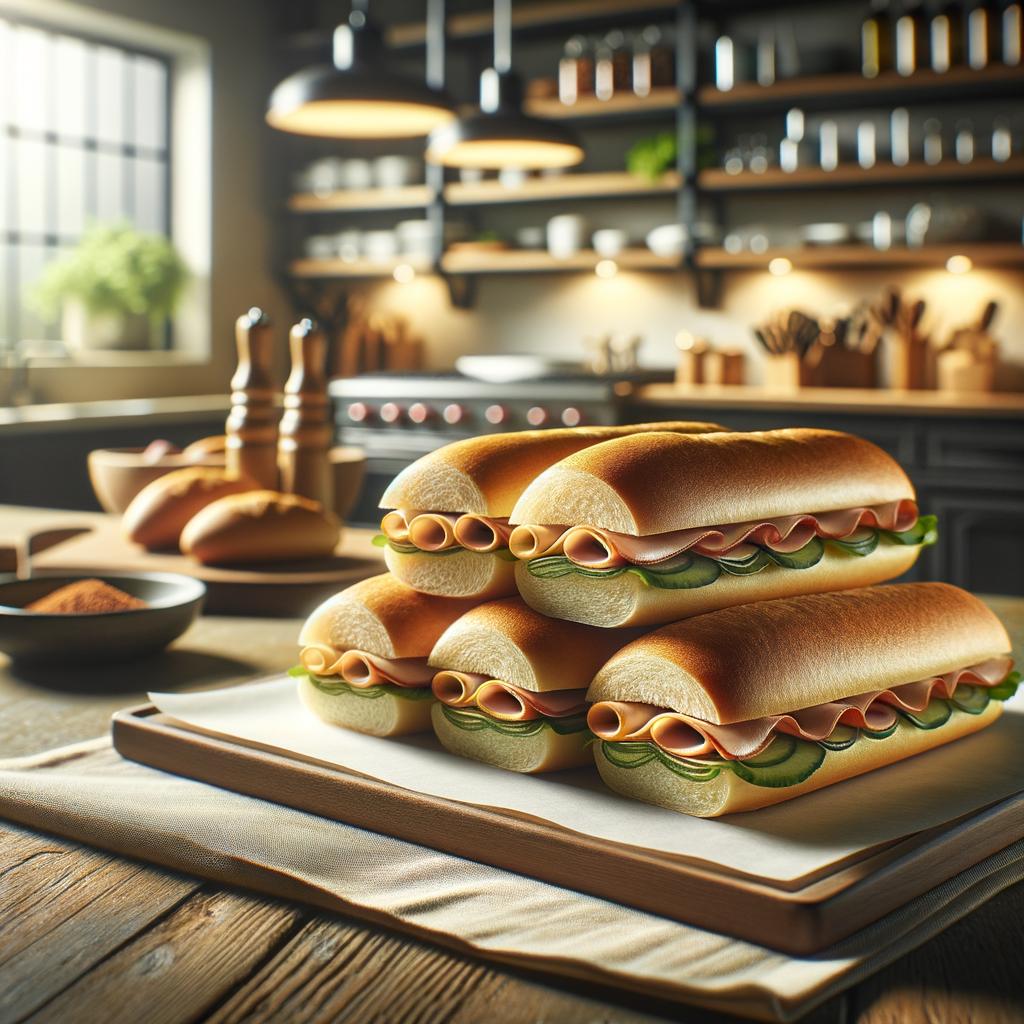Sub Rolls

Description Sub rolls, also known as submarine sandwich rolls, are a delightful staple in the world of bread. Their appearance is distinct, with a long, cylindrical shape that mimics the look of a submarine, hence the name. They boast a golden-brown crust that's slightly crisp, encasing a soft, fluffy interior that's a joy to bite into. The flavor is subtly sweet and yeasty, providing a versatile base that can complement a wide variety of fillings. What sets sub rolls apart from other bread types is their unique structure that allows them to hold an abundance of ingredients without falling apart, making them a popular choice for sandwiches.
Primary Uses Sub rolls are most commonly used to prepare submarine sandwiches, a staple in American cuisine. They can be stuffed with a myriad of ingredients, from cold cuts and cheeses to vegetables, sauces, and more. Their sturdy structure makes them ideal for hearty fillings, and they are a key component in popular dishes like the Italian sub, Philly cheesesteak, and the New England Lobster Roll. Beyond culinary uses, sub rolls also hold a cultural significance in America, being associated with quick, satisfying meals that can be enjoyed at any time of the day.
History The history of the sub roll is as fascinating as its taste. It's believed to have originated in the early 20th century in the northeastern United States, particularly in areas with significant Italian-American populations. The term "submarine sandwich" and the roll it's built on are said to have been named after the submarine-shaped bread created by a baker in New London, Connecticut, where the U.S. Navy's primary East Coast submarine base is located. Over time, the popularity of sub rolls has spread across the nation and beyond, becoming a beloved part of fast-food culture. There are even regional variations, with different names and slight differences in preparation, showcasing the adaptable nature of this bread.
Nutritional Information Sub rolls, while delicious, should be consumed in moderation as part of a balanced diet. They are a good source of carbohydrates, providing energy for the body. They also contain some protein and dietary fiber, especially if made with whole grains. However, they can also be high in calories and sodium, particularly when considering the fillings that often accompany them. Compared to other types of bread, sub rolls may contain more calories due to their size, but they also offer a unique ability to create a balanced meal when filled with a variety of proteins, vegetables, and healthy fats.

